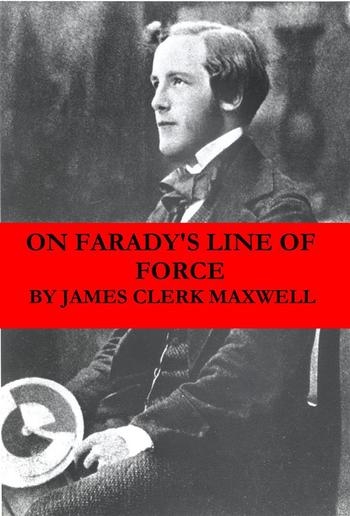
James Clerk Maxwell - On Faraday's Line of Force (The translated Faraday's ideas into mathematical language)
On Faraday's Line of Force (The translated Faraday's ideas into mathematical language)
James Clerk Maxwell
Description
James Clerk Maxwell was highly regarded as one of the most brilliant mathematical physicists of the age. He made an enormous number of advances in his own right. But when he translated Faraday's ideas into mathematical language, thus creating field theory, this unified framework of electricity, magnetism and light became the basis for much of later, twentieth century physics, Faraday and Maxwell’s collaborative efforts gave rise to many of the technological innovations we take for granted today - from electric power generation to television, and much more.
Other physicists were equally impressed with Maxwell's work, such as Richard Feynman who commented:
"From a long view of the history of the world—seen from, say, ten thousand years from now—there can be little doubt that the most significant event of the 19th century will be judged as Maxwell's discovery of the laws of electromagnetism. The American Civil War will pale into provincial insignificance in comparison with this important scientific event of the same decade."
This book includes the following:
VIII. On Faraday's Lines of Force.1
I. Theory of the Motion of an incompressible Fluid.8
II. Theory of the uniform motion of an imponderable incompressible fluid13
Application of the Idea of Lines of Force.31
Theory of Dielectrics.34
Theory of Permanent Magnets.35
Theory of Paramagnetic and Diamagnetic Induction.36
Theory of Magnecrystallic Induction.38
Theory of the Conduction of Current Electricity.38
On Electro-motive Forces.39
On the Action of closed Currents at a Distance.42
On Electric Currents produced by Induction.45
PART II.48
On Faraday's "Electro-tonic State."48
On Quantity and Intensity as Properties of Electric Currents.50
Magnetic Quantity and Intensity.55
Electro-magnetism.56
THEOREM I.60
THEOREM II.61
THEOREM III.61
THEOREM IV.62
THEOREM VII.71
Summary of the Theory of the Electro-tonic State.79
EXAMPLES.84
I. Theory of Electrical Images.84
II. On the effect of a paramagnetic or diamagnetic sphere in a uniform field of magnetic force[25].89
III. Magnetic field of variable Intensity.92
IV. Two Spheres in uniform field.94
V. Two Spheres between the poles of a Magnet.96
VI. On the Magnetic Phenomena of a Sphere cut from a substance whose coefficient of assistance is different in different directions.98
VII. Permanent magnetism in a spherical shell.101
VIII. Electro-magnetic spherical shell.102
IX. Effect of the core of the electro-magnet.104
X. Electro-tonic functions in spherical electro-magnet.105
XI. Spherical electromagnetic Coil Machine.108
XII. Spherical shell revolving in magnetic field.112

